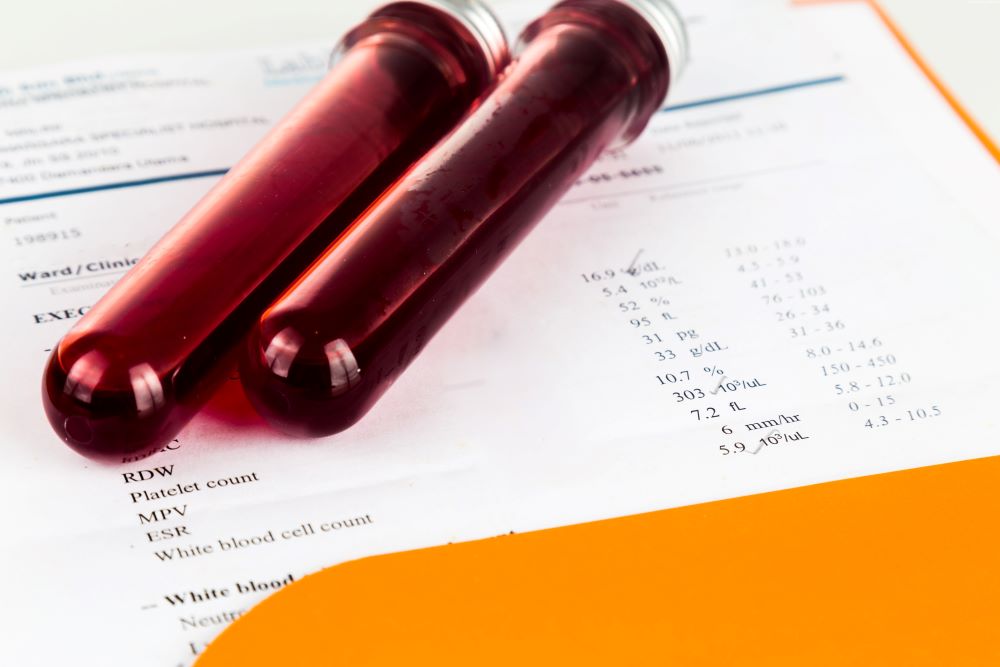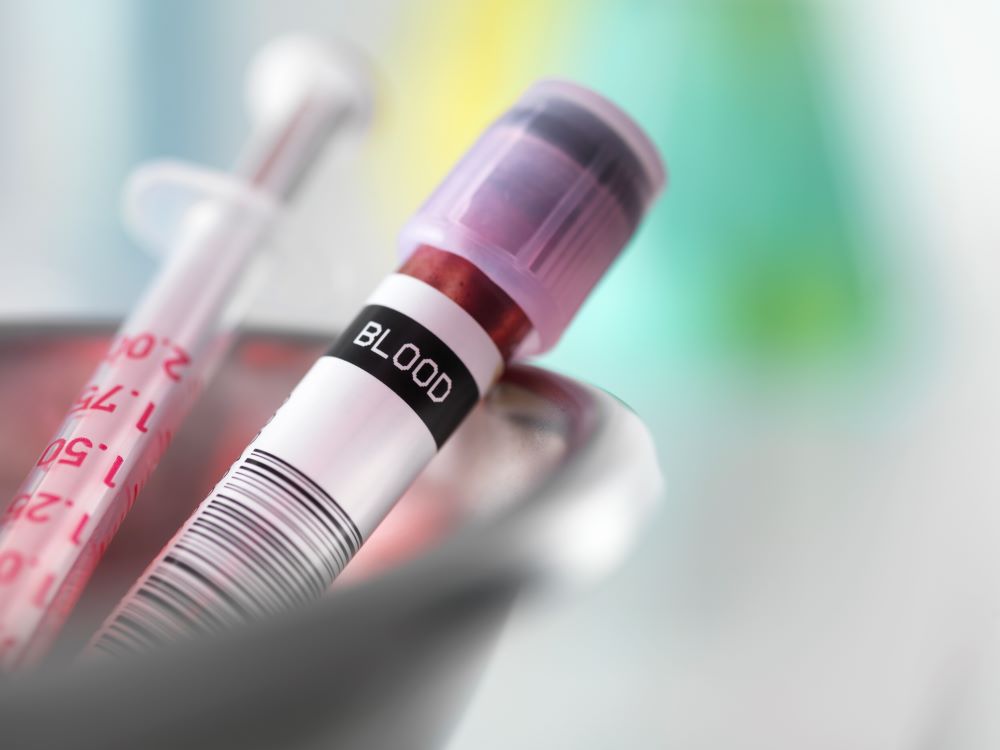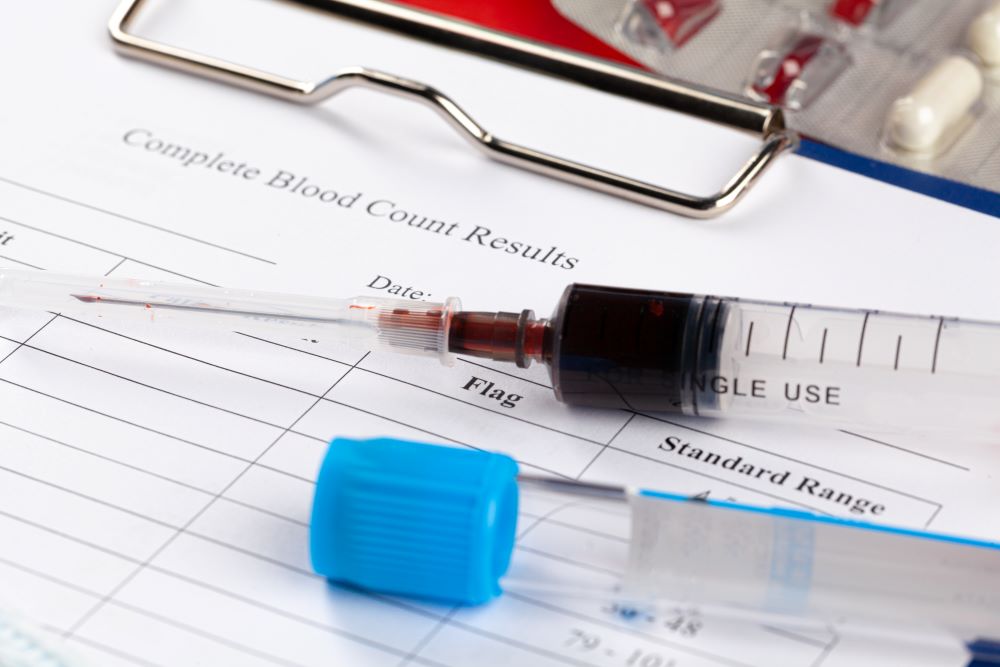What is the PLT (Platelet) Count Blood Test?

A platelet count in blood tests means measuring the number of platelets present in an individual's body. Platelets, also known as thrombocytes, are made in the bone marrow and are present in the blood to help it clot. A platelet test is part of a complete blood test and measuring platelets, white blood cells and red blood cells.
Individuals willing to know more about PLT count blood tests can continue reading.

Table of Contents

What Is a PLT Count Blood Test?

As discussed above, a PLT blood test is conducted to diagnose or check if an individual has any blood-clotting related problems. Blood-clotting problems can indicate various disorders like excessive clotting disorder, bone marrow disease or bleeding disorder. It is often a part of a general health check-up.
There are tens of thousands of platelets present in a single drop of blood. Platelets form clots when an individual’s blood vessel undergoes any damage. For example, when an individual cuts his/her finger, platelets present in their blood mix with clotting factors and form a 'glue'-like structure that stops the bleeding.
Why Is PLT Count Needed?
Although a PLT count is a part of blood tests conducted during regular health check-ups, a platelet count blood test is needed when an individual’s healthcare provider feels he/she has-
- Thrombocytosis (high platelet count)
- Thrombocytopenia (low platelet count)
Apart from that, individuals also take this test before any surgery to assess the risk of bleeding. This test also monitors individuals undertaking treatments such as chemotherapy and blood thinners.
Regular blood tests for platelet count for individuals who are diagnosed with blood clotting conditions allow doctors to check the effectiveness of medication on the increase or decrease of blood’s ability to form a clot.
Too high or too low platelets might lead to health complications. However, an individual's platelet count can change with age and other medical conditions.
When Should I Get the PLT Test?
If there is sudden or unexplained bruising, excessive bleeding, or any condition that may affect the clotting of your blood, you need to have a PLT (platelet) test performed. It is also recommended if your doctor suspects a disorder related to low or high platelet count, such as thrombocytopenia or thrombocytosis, or if you are undergoing treatment that could impact platelet levels.
What is the Procedure for the PLT Test?
Other than knowing what platelet count is in a blood test, individuals must also know how to measure it. A PLT blood test is measured by following a simple procedure which takes only a few minutes. Individuals can visit a hospital or lab, or doctor's office for the test. The lab technician will follow these steps to conduct the test.
Step 1: The technician will select a vein on the inside of an individual’s arm, near his/her elbow.
Step 2: The second step is the technician will put a tourniquet around the patient's upper arm. This tourniquet is a tight band or cord, and it pushes blood down into the veins, which makes it easier to draw blood.
Step 3: The lab technician will then clean the skin around an individual's vein.
Step 4: Then, a needle is inserted into the vein, and individuals might feel some pain and discomfort at this stage.
Step 5: The technician draws the required amount of blood and fills it in a collection tube.
Step 6: Then, he removes the needle and tourniquet and might put some cotton or bandage over the affected area.
How Should You Prepare for the PLT Test?
Before you go in for your PLT test, it is important to know how to prepare. These are guidelines on how to get ready for a PLT test:
- Tell your doctor about any medications and supplements you’re using, as some might affect the level of platelets.
- Fasting is normally unnecessary, except if other tests are being done at the same time, as doctors advise.
- Do not engage in extreme activities like heavy training before testing, as this might momentarily influence your number of platelets.
How is PLT Measured in Blood Tests?

PLT (platelet) levels can be measured through blood tests, which form part of a complete blood count (CBC). A blood sample is usually withdrawn from your arm vein and then taken for analysis in a laboratory.
The platelet count is expressed as thousands per microliter(k/uL) of the total amount of blood and shows how many cells exist to help with wound healing and clotting.
How to Read Results of PLT in a Blood Test?
Reading PLT blood test results involves comparing your platelet count to the normal range. The most important thing about a PLT test is that you must compare your platelet count with the normal range. When this number falls below it, it puts the person at a greater risk for bleeding.
On the other hand, the above range figure may represent thrombocytosis- which predisposes to clot formation. Your doctor will look at these results to determine your general health and any symptoms you may have.
What Is a Normal PLT Count Range?
A healthy individual’s platelet count normally ranges from 150,000 to 450,000 platelets per microliter of blood.
However, individuals with a platelet count above 450,000 might suffer from thrombocytosis. On the other hand, individuals with a blood count of less than 150,000 might suffer from thrombocytopenia.
What Does It Mean If Your PLT Count Is High?
A high platelet count, also known as thrombocytosis, means more platelets are in your blood than normal. This condition can be a reaction to various factors such as infections, inflammation, or blood loss. It can also indicate more serious underlying conditions like bone marrow disorders or certain cancers.
In some cases, high platelet levels can lead to complications such as blood clots, which may increase the risk of stroke or heart attack. If your PLT count is high, further investigation and monitoring by a healthcare provider are essential to determine the cause and appropriate treatment.
Symptoms of High PLT

Accurate assessment of SGOT levels is essential for diagnosing potential health issues. Symptoms and complications that an individual might face are:
What are the Causes of High PLT?
An increased platelet count signifies too much clotting in an individual’s blood vessels or might cause too much bleeding when platelets interfere with clotting. It could mean an individual might have these problems:
What Does It Mean If Your PLT Count Is Low?
A low platelet count is known as Thrombocytopenia, whereby there are fewer platelets than normal ones. This condition might be caused by different factors such as viral infections, specific medications, autoimmune diseases, and bone marrow disorders. Meanwhile, low levels of PLTs may cause symptoms such as easy bruising or excessive bleeding, even from minor cuts and nose bleeds, among others.
In its severe form, it can cause internal bleeding, which is considered a medical emergency. It is important, therefore, that if you have a low PLT count, you consult with a healthcare provider so that they can find out what is causing it and recommend an appropriate treatment in their capacity.
Symptoms of Low PLT
Recognising the signs of low platelet count is crucial for early diagnosis and intervention. Symptoms that an individual might see if they have a low platelet count are as follows:
What are the Causes of Low PLT?
Having a low platelet count can prevent an individual’s blood from clotting. A low PLT count could be the result of:
That is all for PLT in a blood test that individuals need to know about. Having either a high platelet count or a low platelet count is hazardous for individuals. Thus, they are always advised to conduct a PLT test if they see any symptoms or signs.
What Steps to Take When PLT Levels Are Low or High in Blood?
Platelet (PLT) levels in the blood are crucial for proper clotting and overall health. If your platelet count is too low (thrombocytopenia) or too high (thrombocytosis), it may indicate an underlying health condition. Here’s what you can do:
- Identify the Cause: Abnormal PLT levels can result from conditions such as infections, anemia, autoimmune disorders, or bone marrow issues. Consult a doctor for proper diagnosis and management.
- Adopt a Nutrient-Rich Diet: If PLT levels are low, include iron-rich foods, vitamin B12 and folate sources (eggs, dairy, citrus fruits) to support healthy platelet production. If PLT levels are high, focus on anti-inflammatory foods like turmeric, berries, and leafy greens to prevent excessive clotting.
- Avoid Harmful Substances: Limit alcohol intake as it can suppress platelet production and reduce exposure to toxins and certain medications that may impact platelet function.
- Follow Medical Advice & Treatment: Your doctor may prescribe medications, supplements, or lifestyle changes to manage abnormal PLT levels. If necessary, treatments like blood transfusions or platelet-reducing therapies may be recommended.
- Consider Health Insurance for Emergency Care: Maintaining balanced PLT levels is vital for overall health. A comprehensive health insurance plan ensures access to timely medical care, including treatment for conditions affecting platelet count, such as bleeding disorders or clotting diseases.
Protect What Matters - Explore Other Insurance Options














